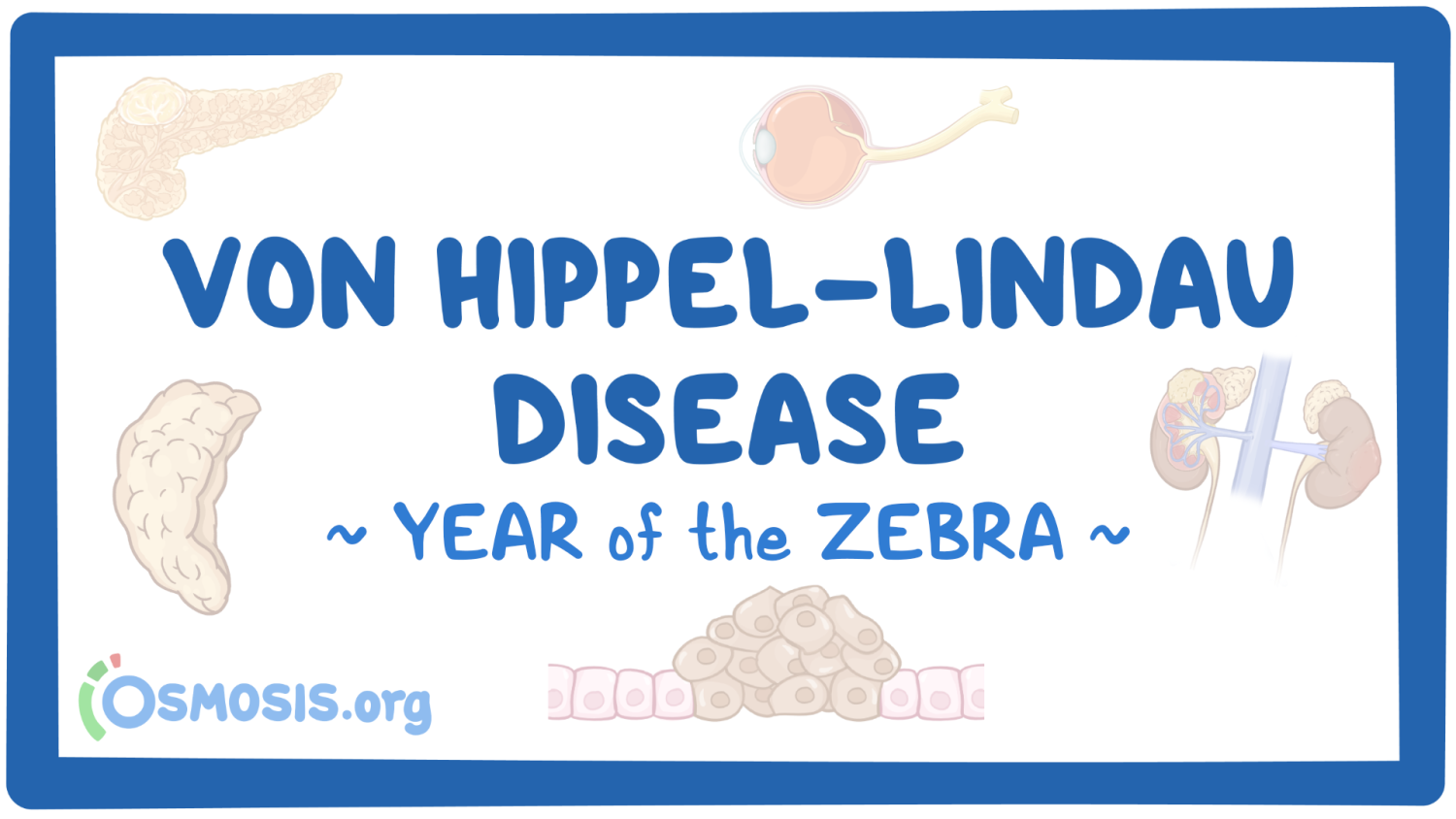
Rare Disease Education: Von Hippel-Lindau Disease
Editor: Kelsey LaFayette, DNP, RN, FNP-C
"When you hear hoofbeats, think of horses, not zebras,” is a common saying in medical education that means you should think of common conditions first, instead of rare ones, in making a diagnosis. “Rare” is a relative term though and about 7,000 rare, or "zebra," conditions affect more than 350 million individuals worldwide. Although these conditions collectively affect an enormous number of people, each of these conditions individually is rare enough that it can be difficult to secure the resources to study them and to develop treatments and cures. Likewise, awareness of rare conditions may be low and health care professionals may not be familiar with their signs and symptoms making it more difficult to reach a correct diagnosis and provide effective treatments.
To increase knowledge about rare conditions, Osmosis and the National Organization for Rare Diseases (NORD) have collaborated on an initiative to bring education and awareness to the public. We are excited to be a part of this initiative because we believe everyone deserves quality health care, no matter how rare their condition.
Zebra Highlight: Von Hippel-Lindau Disease
Throughout our life our body acts like a continuous construction site. It goes through periods of intense growth at first, then goes through maintenance of what has been built through repairs, expansions, and improvements. Yet, if one of the construction teams goes rogue unsupervised and starts building up structures they are not supposed to, they could jeopardize the whole project. This is analogous to the mechanisms that drive this month’s Zebra, Von Hippel-Lindau disease (VHL).
Von Hippel-Lindau disease is a rare genetic disorder caused by a mutation in the VHL gene, rendering it ineffective. The VHL gene normally prevents tumor formation, like a manager keeping a rogue construction crew in check. The result is tumor development in many different organs, like the central nervous system, eyes, kidneys, adrenal glands, and pancreas.
There is no single primary symptom because the manifestations depend on which organ is affected. Still, the average age of onset of symptoms is 26 years. Von Hippel-Lindau disease affects 1 in 36 thousand people without significant difference between males and females or ethnic groups.
To learn more about the treatment of Von Hippel-Lindau disease, watch the dedicated Osmosis video on YouTube and Osmosis.org.
Meet Becca Peach
We pride ourselves as an organization for taking care of our own, especially when one of our team members is facing a rare disease. Their strength and resilience inspire us, and we stand ensuring that no one feels alone.
Watch the above video to meet Becca Peach who was diagnosed with Von Hippel-Lindau disease at 17 years old and proudly shares her story to inspire everyone to thrive, despite health challenges.
Organization Taking Strides
The VHL Alliance was founded in 1993 by Joyce Graff, Susan Warnick, and Peggy Marshall, two Von Hippel-Lindau caregivers and a Von Hippel-Lindau patient. It was formed to alleviate the isolation felt by VHL patients and their families, especially before the internet era. The organization sought to connect and educate patients, their families, and healthcare professionals to improve the diagnosis and treatment of this rare condition.
Over the past 25+ years, the VHL Alliance has become a leading resource for the community, supporting an estimated 15,000 individuals in 108 countries across their worldwide network of organizations. Successive strategic plans have guided the organization's growth, focusing on enhancing quality of life and health outcomes for patients through education, treatment access, and research advancements.
The VHL Alliance collaborates with leading institutions to fund research aimed at finding better treatments and, ultimately, a cure for VHL and related cancers. They contribute to advances like the identification of the VHL gene and the FDA approval of Belzutifan, a systemic therapy for VHL.
The Alliance also helps establish standards for clinics that specialize in the diagnosis and treatment of VHL and provides referrals to designated clinical care centers in the United States and around the world.
To bolster community engagement, they host regular events, such as family weekends and support calls, to foster a sense of community among patients and their families. They also utilize every opportunity to provide educational materials and organize conferences to keep patients and medical professionals up to date on the latest VHL research and treatments. They do so in several languages to promote access and global reach.
To learn more about the VHL Alliance and your role in supporting their mission, visit their website.
